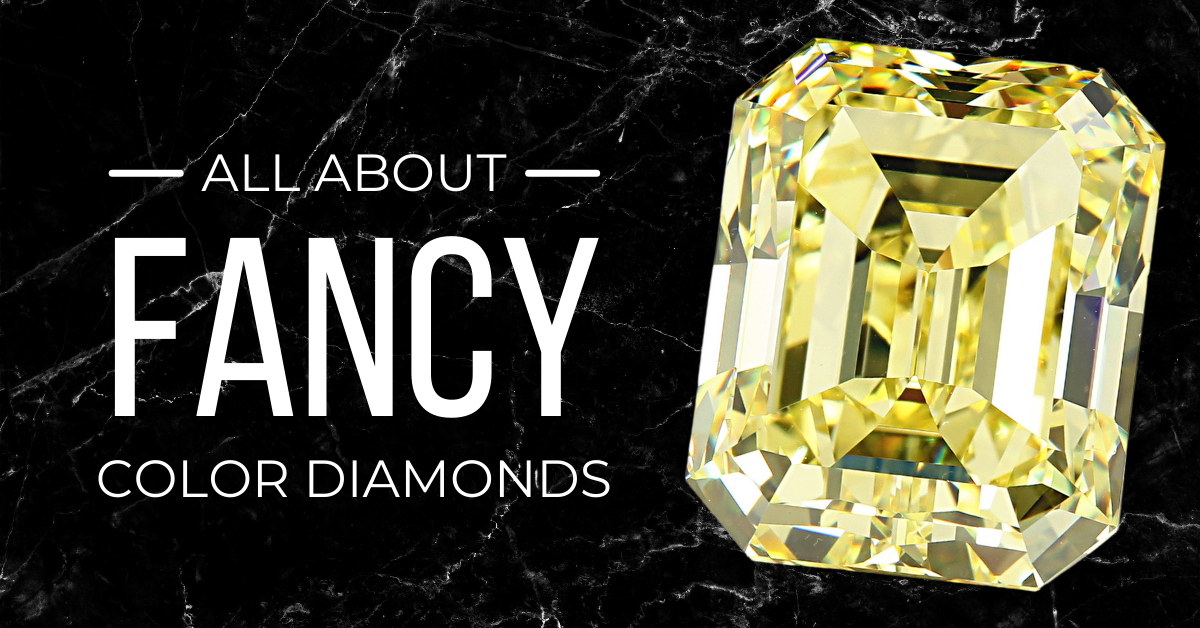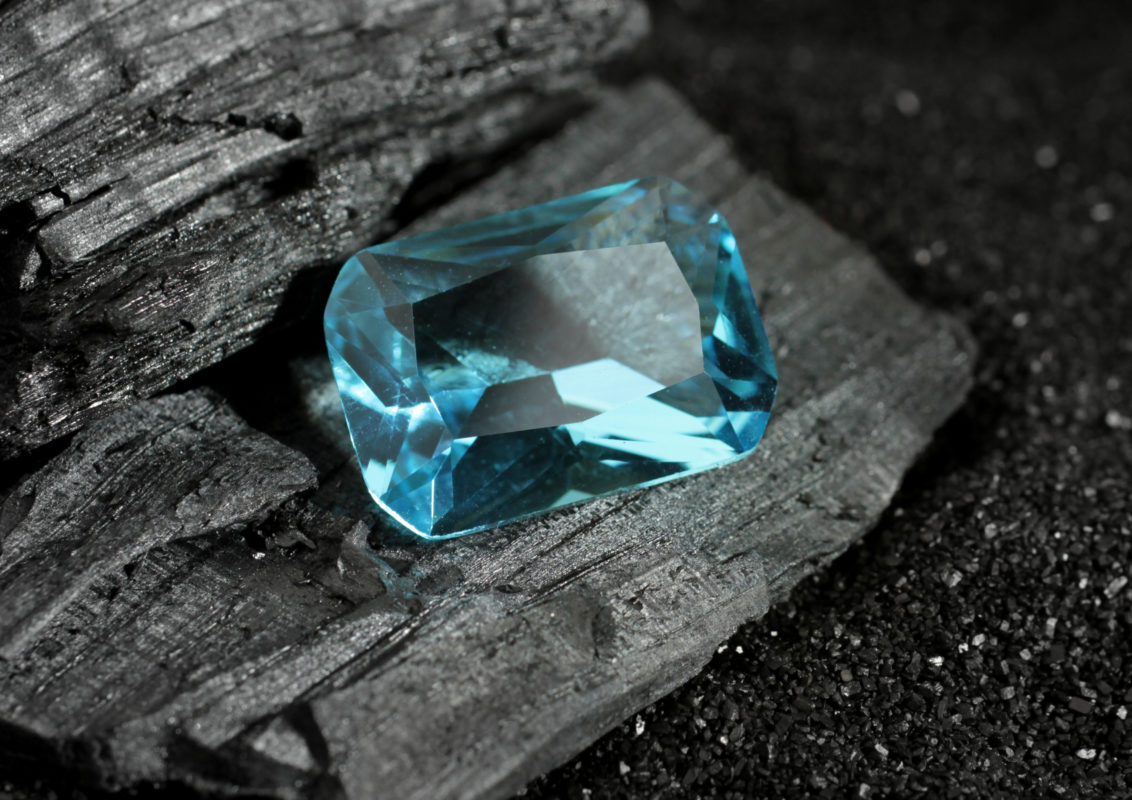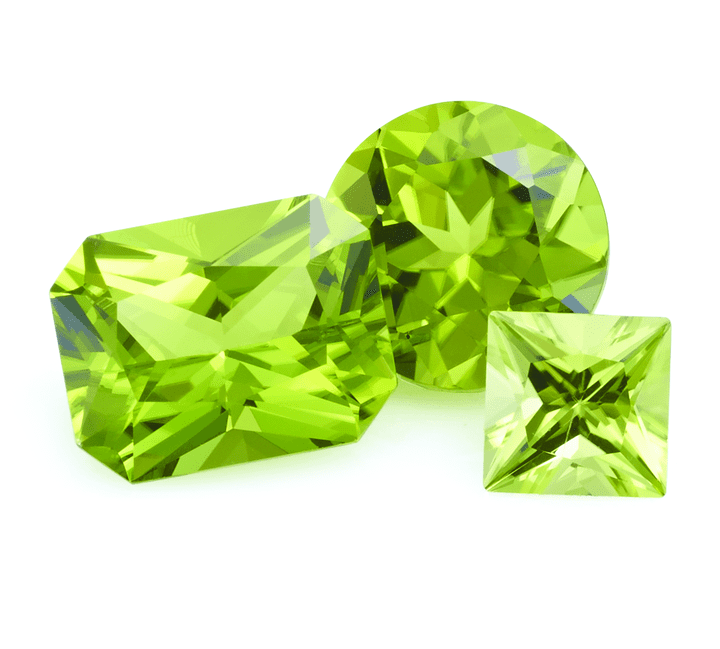Jennifer Lopez’s love don’t cost a thing, but she still got a pretty solid engagement ring from Ben Affleck! J. Lo’s newest engagement ring features an 8.5-carat ultra-rare green diamond with white diamonds. Affleck and Lopez were previously engaged in the early 2000s, so this is technically their second engagement and second engagement ring. The celebrity ring is worth a whopping $5-$7 million! If you’re like us, you might want to learn more about green diamonds and how they come to be. Read on to learn more about this beautiful phenomenon! About Green Diamonds The most common diamond colors are clear, black, and brown. Other colors are much rarer; Bennifer’s first engagement ring was a pink diamond, even more rare than the green one she dawns now. Another rare and highly sought-after color of a diamond includes blue. You may have heard of quite a famous blue diamond: The Hope Diamond. Green diamonds result from specific imperfections in the diamond’s structure, most commonly caused by radiation damage. In a clear diamond, every color gets reflected. However, in a green diamond, radiation from nearby uranium or thorium ore can hit a diamond’s carbon structure and cause light to bounce off it differently, creating a green hue. There are reports of green diamonds in nearly every country that produces diamonds. However, according to GIA, some localities consistently dig up more of these valuable stones. These countries include Brazil, Guyana, Venezuela, Zimbabwe, and India. The largest green diamond is the 41-carat Dresden Green Diamond. From the Golconda mines in India, it has a clarity of VS1 and potentially internally flawless, if slightly recut. While every diamond is unique, we love the imperfections that create a specialty color diamond. In fact, we think this imperfect diamond is the perfect choice for the rekindled Bennifer romance! What do you think?
Tag Archives: gemology
Are you looking for a unique twist to the traditional diamond? Then, we have just the stone for you, no matter what your favorite color is. Read on to learn more about fancy color diamonds! About The Fancy Color Diamond According to GIA, a diamond falls under the category of fancy color if it is yellow or brown beyond the GIA D-Z color grading scale or diamonds that exhibit any other color face-up. This includes colors like red, green, blue, pink, and even black. If you’ve read our post about the four C’s of diamonds, you’ll know that white diamonds typically fetch a higher price. However, the opposite is true of Fancy Color Diamonds. The stronger that color is, the more valuable the gem will be. However, if you want more bang for your buck on a fancy, go for a yellow or brown. They aren’t as “desirable” as some other colors, but they sparkle just as much! Famous Fancies The world’s most famous diamond, The Hope Diamond, is a fancy color diamond. It’s a 45.52-carat diamond, and its color has been most recently described as fancy dark grayish-blue. It has a storied history spanning back to the late 1600s. Famous owners of this gem include Marie Antoinette and Louis XIV. It is on display in the Smithsonian National Museum of Natural History in Washington, D.C today. The Black Orlov diamond is another well-known fancy, with a history as dark as the stone itself. Some say the diamond is cursed — it’s even rumored to be responsible for three suicides throughout the first half of the 20th century. Charles F. Winson purchased the gem in the 1950s and chose to break its (alleged) curse by cutting the diamond into three pieces. The 67.50-carat cushion-shaped diamond is on display in the American Museum of Natural History; however, the whereabouts of the remaining diamonds are a mystery. Fancy Origins Diamonds with fancy colors have traditionally been a small part of the jewelry business, but their popularity has grown over the past few decades. Most come from India, South Africa, and Australia, but other mines in Brazil, Venezuela, and Indonesia produce fancy color diamonds. How are fancy color diamonds made? During a natural diamond’s creation, trace elements such as nitrogen, sulfur, and boron and color diamonds in shades of yellow, green, and blue. However, you won’t find trace chemical elements in pink diamonds. Instead, “the color is caused by a distortion in the diamond’s crystal lattice, created by intense heat and great pressure from all directions after the stone’s formation,” according to the Victoria Museum in Australia. The distortion misplaces many carbon atoms from their normal positions and alters the qualities of light that allows us to observe the stone as pink. Whether you’re looking for a white diamond or a fancy color stone, we have the best selection in DFW. Come see why we’ve stood the test of time at the original Dallas Gold & Silver Exchange.
When the calendar hits March, Dallasites know to get ready for beautiful days mixed with spring showers. That’s why aquamarine is the perfect gemstone for those with March birthdays. The sparkle and color perfectly embody the mix of sunshine and rain that spring brings. However, aquamarine connects to a different kind of water source: the ocean. The name Aquamarine comes from the Latin word for “water of the sea,” and the bluish hues are said to bring a sense of calm. Sailors would often carry this gemstone on their ships in hopes of calmer water. Read on to learn more about this March birthstone! What is Aquamarine? Aquamarine is the green-blue to blue variety of the mineral beryl. Its color is usually a light pastel greenish blue. Darker blue aquamarines are typically more desirable, so heat treatments deepen bluish hues. The Aquamarine is fairly durable, ranking 7.5 to 8.0 on the Mohs hardness scale, and can be mined at high elevations in Pakistan’s Karakoram Mountains, according to GIA. Additionally, miners find Aquamarine in Brazil, China, Kenya, Madagascar, Ukraine, and even here in the United States. Aquamarine was designated the March birthstone in 1952 and is the gem of the 19th wedding anniversary. As a member of the beryl family, it is closely related to emerald and morganite. Aquamarine Carvings and Jewelry Like other beryls, aquamarine forms large crystals suitable for large carvings and fashioned gems. While carvings are popular for translucent to opaque aquamarine, the deeper blue aquamarines in the right hands make beautiful jewelry. Gemologist can cut Aquamarines into almost any shape, and faceted aquamarines often have no eye-visible inclusions. A popular shape for this stone is round or oval brilliant cuts and emerald cuts. In some stones, cut-cornered cuts prevent chipping. Aquamarine is a great option for jewelry because it is readily available. Additionally, it has an intense sparkle even under low light conditions. During her wedding, Meghan Markle has sported this stone in a cocktail ring. As a result, interest in the aquamarine resurfaced. She received the unique piece from her husband, Prince Harry, during their wedding. According to Gem Society, the yellow gold cocktail ring belonged to the late Princess Diana. View this post on Instagram A post shared by Clayton Delville – Gem & Jewel (@clayton_delville) Even if it isn’t your birthday or 19th wedding anniversary, we think aquamarine is a fabulous gemstone for all occasions. Visit us to see some beautiful aquamarine pieces in person! If we don’t have the right piece, we’ll find or make one for you with our talented jewelers.
June isn’t the only month that gets three birthstones. Bestowed upon those with August birthdays are the gemstones peridot, sardonyx and spinel. Each gemstone is vastly unique from the other and gives August babies a number of options to choose their perfect look! Read on for details on each August birthstone. Peridot Peridot is the primary August birthstone. A gem variety of the mineral olivine, peridot ranges from yellowish green to greenish yellow and has been often mistaken for emerald and topaz throughout history. In fact, some historians speculate that Cleopatra’s vast emerald collection was actually comprised (partially) of peridot. Not only is peridot the August birthstone, but it’s also the 15th anniversary gemstone. This is a great gift option for every budget, depending on the size of the peridot. While large, grass-green peridots are more expensive, there are plenty of smaller stones that would fit a smaller budget. Sardonyx Sardonyx is the original gemstone — the OG, if you will — assigned as the August birthstone. When peridot joined the party, it became the primary August birthstone ahead of sardonyx. As the name suggests, sardonyx combines alternating layers of sard and onyx. These two types of mineral chalcedony separate to create reddish and white zerbra stripes. The finest examples of sardonyx display sharp contrasts between layers. According to the American Gem Society, “sardonyx is widely available and relatively inexpensive as gems, beads, and jewelry. It is often carved into cameos, intaglios, and brooches to show the color contrast between layers.” Spinel Remember how we said the ruby is the most valuable colored gemstone besides diamonds? Well, if you’re looking for a budget-friendly option for a ruby, that’s where the spinel gemstone comes in handy. It comes in a wealth of colors, including intense red, and is less pricey. Often mistaken for other gemstones throughout history, the spinel has been dubbed “the great imposter.” In fact, one of the most famous “rubies” in the world, the Black Prince’s Ruby, in the British Imperial Crown is actually a red spinel. Not only is the gemstone strikingly beautiful, it carries great historical meaning. Just how great is its historical meaning? We can thank spinel for the study of gemology! As a result of the spinel’s similarity to ruby, people began to study the gemstones and their differences. Without spinel, we may not even have birthstones!




